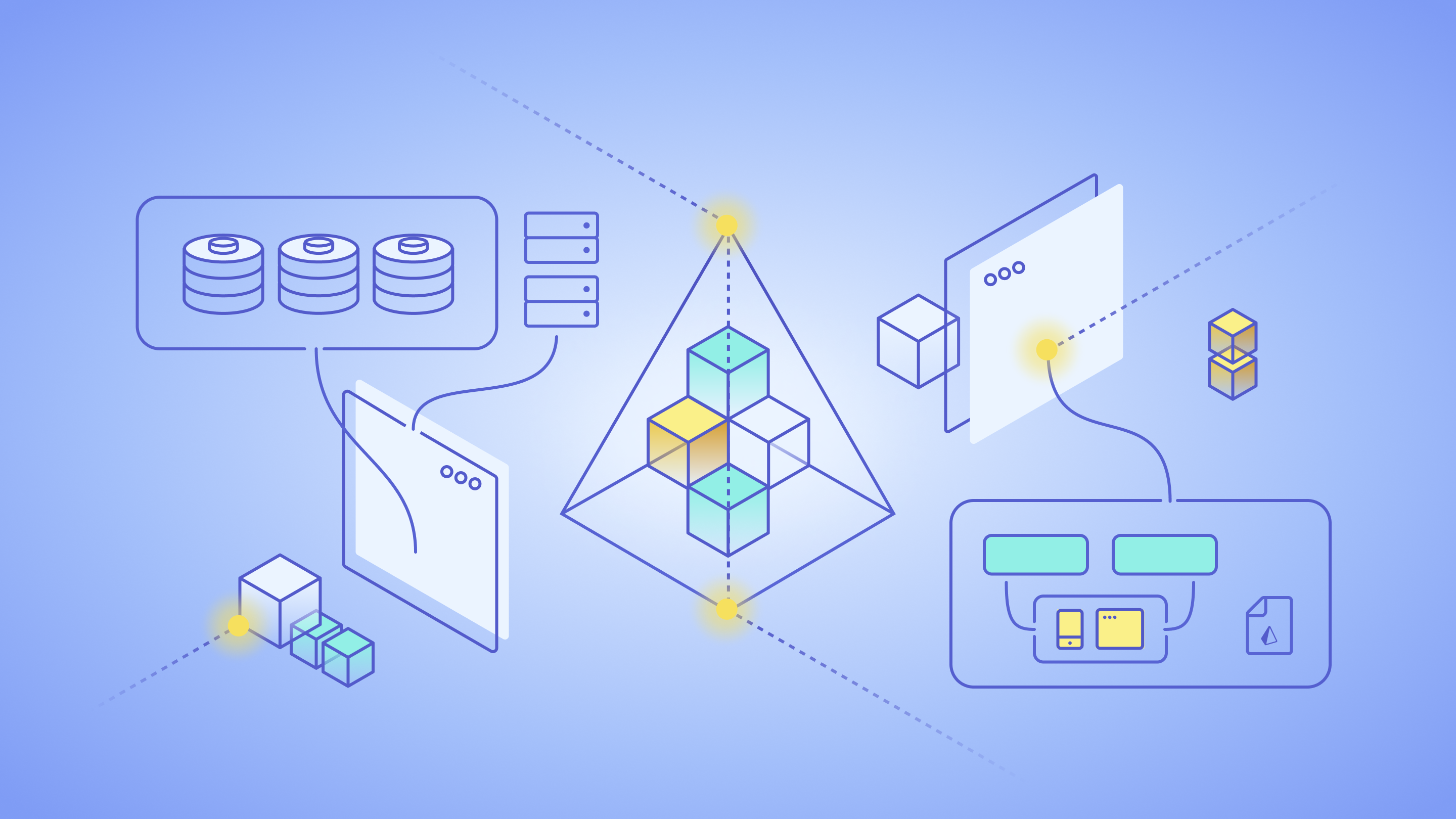May 03, 2022
Prisma Raises $40M to Build the Application Data Platform
We are excited to announce that we have raised our Series B funding. Learn more about our vision of the Application Data Platform for development teams & organizations in this article.

Contents
- Prisma ORM is becoming the new default
- We raised $40M to build the Application Data Platform for development teams 🎉
- The reality of data infrastructure is messy
- The Application Data Platform enables better data access across organizations
- Inspired by the data access layers of Facebook & Twitter
- Introducing the Prisma Data Platform
- Prisma is one of the world's top 10 early-stage, enterprise tech startups
- We are hiring, come join our team 💚
- What's next?
Prisma ORM is becoming the new default
Since we launched the complete Prisma ORM last year, more than 150.000 developers have adopted Prisma for new or existing Node.js and TypeScript projects. With this funding, we are going to significantly increase our investment in the open-source Prisma ORM to meet the demand of our increasing user base.

Developers love the Prisma ORM for its ease of use and the outstanding developer experience provided by automatic type generation, declarative database migrations and direct integration in the VS Code IDE. Prisma reduces friction and uncertainty from database workflows — from data modeling, to migrations, to querying!
Prisma is used in production by thousands of companies of all sizes! Hear about the experience of the companies that successfully adopted Prisma on our Showcase page.
Explore Showcases
In addition to companies adopting Prisma as their way to interact with databases, we have been humbled to see that many up-and-coming web frameworks and other developer tools are choosing Prisma as their default ORM layer (some examples are Redwood, Blitz, Keystone, Amplication and Wasp), who all have incredible communities that we are lucky to be part of.
We raised $40M to build the Application Data Platform for development teams 🎉
Based on the success of the open-source ORM, we are excited to share that we have raised our $40M series B funding round to build the Application Data Platform for development teams and organizations.
This funding will also allow us to continue to significantly invest in the development of the open-source ORM to add new features and make the developer experience even better.
The round is led by Altimeter with participation from our existing major investors Amplify Partners, and Kleiner Perkins. We are also very happy to continue to deepen our relationship with companies in the ecosystem through angel investment from founders of companies such as Vercel, PlanetScale, GitHub and SourceGraph.
The way developers build applications is evolving. Prisma breaks down barriers between frontend and backend teams, and between data engineers, developers, and business analysts. The Prisma ORM is a product developers LOVE, and an important step towards modernizing full stack development.
 Jamin Ball | Partner @ Altimeter
Jamin Ball | Partner @ Altimeter Before exploring our vision for the Application Data Platform for teams and organisations, let's take a step back and look at the current state of data infrastructure at organizations.
The reality of data infrastructure is messy
Any developer knows the feeling of starting a fresh project with a clean slate: Ah, the blessings of a clean data flow, proper modularization and solid architecture.
However, the same developer can most likely confirm that the reality of applications they are working with in their dayjobs doesn't look like this — at all.
The aspirations for a sustainable, clean, and uniform technical stack are mostly destined to fail.
The initial clean slate wears out quickly and it takes more and more effort to keep all the moving pieces under control.
Acquisitions and the merging of tech infrastructure, rapid product and team growth, the continuous stream of emerging technology, and even the autonomy of teams in microservice-based organizations to decide on their own tech stacks are further factors contributing to the messiness of data infrastructure at many companies.
The result is data vanishing in silos. It becomes harder to create a cohesive and holistic view of the entirety of an organization's data without getting into more involved and complicated solutions.
Siloed data leads to bad customer experience ...
One of the crucial points for a great customer experience is relevance. A user of an application should be presented with relevant information to their current context, including things like prior interactions with the app (or even better the company that is offering the app), location, device, etc.
Users are more likely to make use of a service they believe is relevant to them, and caters to their needs. Crafting such an experience requires the application to have all the necessary data at hand, regardless of where it lives.
... as well as bad developer experience
Developer experience is a feeling. The feeling to become productive with a stack in no time. The feeling to be naturally picking up new concepts, and see them nicely fit a mental model. The feeling of iterating fast. The feeling of being confident while deploying changes.
Having data stored in different systems — each coming with their own set of tools, caveats, documentations and workflows goes against all of that. Developers working on a system that is painful to maneuver will likely get a kind of fight-or-flight response to the situation.
In an economy where developer talent is scarce, working on the latest tech stack with modern tooling and workflows offering a great developer experience makes the choice easy: flee to the company next door that invests in proper tooling for their developers.
The Application Data Platform enables better data access across organizations

Companies have been facing problems with data access across organizations and giving product/development teams better ways to work with the data they need to build innovative products. This led to the emergence of a new kind of system we refer to as the Application Data Platform.
The goal of the Application Data Platform is to bring developers, data owners, and infrastructure teams together. It liberates access to data, enabling teams to bring applications from prototype to billion-users scale without compromise on productivity, security, or compliance.
It is important to note that the Application Data Platform is built for developers — not for data or business analysts.
When it comes to data analytics and reporting, organizations already have a plethora of tools available to gather holistic views of their data. The Application Data Platform now solves similar problems for product and development teams in order to enable companies to build better products.
Inspired by the data access layers of companies like Facebook & Twitter
To introduce the principles of an Application Data Platform, let’s take a look at two tech giants that are at the forefront of developing this new tooling, namely Facebook with TAO, and Twitter with Strato.

Both TAO and Strato are providing an interface to the company's data infrastructure so that engineers working on their respective products can stay productive and confident that their changes will meet the performance requirements coming at Facebook or Twitter's scale.
They also help to tackle organizational problems, enabling engineers to easily spin off a development environment with realistic data, reducing chances to make mistakes while building new features.
Introducing the Prisma Data Platform
We are excited to bring the idea of the Application Data Platform to life and make it available to companies of all sizes with the Prisma Data Platform (PDP).
In the following, we are going to share the vision of the Prisma Data Platform. Most of the features mentioned in the following sections don't exist yet!
To explore what is already available, you can try out the Prisma Data Platform and see how easy it is to get started!
Try the Prisma Data Platform
Components of the Prisma Data Platform
This diagram reflects our current vision for the Prisma Data Platform. We'd love to hear from you — tell us what you like about it and what things you might be missing. Reach out to us and chat with our Product team to share your feedback!

The Control Plane is for data access and project configuration
The Control Plane is where you configure your projects and get an overview of the data that's available to application developers across your organization.
As of today, it consists of the Query Console and the Data Browser where you can configure different roles for data access.
In the future, we are planning to add more fine-grained access control, query analytics and optimization, and development workflows to it.
The Data Plane controls your data flow at runtime
The Data Plane is where your code is flowing through at runtime of your application. It connects your database infrastructure with your application layer and ensures that queries are efficient and secure.
The main feature in the Data Plane that exists today is the Data Proxy which helps with database connection management in serverless environments and ensures that your database doesn't run out of connections even under heavy loads.
Exciting features we're considering
We are hard at work building new features for the Prisma Data Platform. Check out the following two sections to learn more about Data Projections and Preview Databases that we are particularly excited about!
Dedicated databases for your Preview Deployments
Preview Databases are complementing the idea of Preview Deploys from hosting companies like Vercel or Netlify. A Preview Deploy allows developers to view live the adjusted version of an app based on a pull request. With Preview Databases, all your Preview Deployments now get their own database instance so that any schema changes can be applied without messing with other database environments.
If that feature sounds exciting to you, be sure to subscribe for updates and get notified when this feature is added to the Prisma Data Platform.
Subscribe for Updates
Automatically sync data changes into secondary data sources
Data Projections allow you to automatically sync updates from your main database into any kind of secondary data source, such as search databases like Algolia or Elastic Search.
If that feature sounds exciting to you, be sure to subscribe for updates and get notified when this feature is added to the Prisma Data Platform.
Subscribe for Updates
Prisma is one of the world's top 10 early-stage, enterprise tech startups
We are humbled that Prisma has been voted among the top 10 most promising early stage enterprise tech startups. You can find more information about the survey here.
The best enterprise tech startups in 2022 are purpose-built to empower developers, crack data challenges, and evolve how teams operate.
As a follow-up, our Head of Solutions Engineering has been interviewed by a Nasdaq representative and Prisma has been advertised at Time Square in NYC 🗽

We are hiring, come join our team 💚
Needless to say that we are hiring for several roles across the entire organization. If you want to work with us, go and check out our jobs page.
What's next?
We will continue to invest into the open-source ORM as the foundation for our commercial offering! Check out our roadmap to learn about the exciting features we are going to build.
The best places to stay up-to-date about what we're currently working on are GitHub issues and our public roadmap.
You can also start a discussion on GitHub or join one of the many Prisma meetups around the world.
If you never want to miss any news from the Prisma community, follow us on Twitter.
Don’t miss the next post!
Sign up for the Prisma Newsletter



